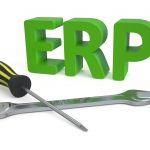ERP Implementation: 5 fixes to common mistakes
Implementing an ERP solution is a big step for any company, small or large. The promise of a solution that alleviates all life’s troubles beckons, all bright and shiny.
There are many common ways to get it alarmingly wrong. Through years of project management experience and many more of blog reading, you probably know to stay away from the usual suspects. You make sure that project is properly planned; you’ve got a change management program in place and are on the road to educating employees on embracing the new ERP ‘culture’. You’ve probably even selected a vendor that offers a suite with just enough customization options to suit your specific business processes. Armed with all this, you’re set; with a reasonably understanding of the complexity of the project ahead.
Kudos! You’re ahead of a lot of first-timers.
In the spirit of knowledge being your best defence, here are a few more ‘deal breakers’. Put these considerations into your project planning and you’ll be well on your way to an ERP solution that truly rocks your world!
1. Don’t treat it like an ‘IT Project’
Larger ERP implementations can cost a few million and be a complex, continuous process where even just the roll out can take a few years. Treating it like a ‘straightforward project’ that IT can have done and dusted in a short time could be an expensive mistake. An organization-wide change like this needs organization-wide buy in, led from the top with the appropriate leadership champions. Start with clear future strategy; how will this system be expected to stretch and fit you 5 years from now? 10? Input will be required from all owners of business processes to engineer the solution to your needs. Employee ownership and engagement will then be the grease that keeps your machine running.
2. Don’t underestimate the importance of accurate data
Having made the above point, also remember that data is the cornerstone on which a successful ERP implementation is built. Your implementation is only as successful as the integrity of your data, so let that underscore your efforts. Define the data you need and where it will be sourced. Use the opportunity to thoroughly clean and convert existing data. And ensure all fresh entries are made in appropriately compatible formats. Do this and you’re on your way to avoiding customer-facing errors and the dreaded ‘scope creep’.
3. Do have an active load-testing environment
On an organizational change as big as an ERP implement, it’s surprising that people still expect to get a feel for results by assigning a few test users. The only way to fully evaluate the changes a solution will bring is to test it by mimicking your entire user load. This will show you what to expect, warts and all, and is the only way you can prepare for potential downtimes and prevent expensive errors.
4. Don’t ignore 3rd party support alternatives
The growing ranks of 3rd party support and maintenance vendors brings with it choices for customers. Companies need no longer feel trapped by premium vendor support. The same level of expertise and service are often available at up to 50% cheaper rates through 3rd party maintenance options. Choice of vendor will depend on many factors from the number of tickets you are likely to submit in a year, the amount of support you need with code and the kind of upgrades you envision in the future. As with anything else, of course a decision warrants a full exploration.
5. Do decommission legacy applications
It’s more common than you would think for organizations that have been in business for many years to have stacked legacy apps that have little or no value to their business as it is today, much less in the future, despite that fact that they account for significant running and maintenance costs. A decommission decision needs to be arrived at after careful assessment on many parameters. There might be larger elements at play including employee security and morale. However, for true ERP success, it is imperative that the solution be allowed to work on its own without the baggage of multiple legacy applications. This is what will make for streamlined, effective operations.
Have you faced issues on these or other areas? We’d love to hear from you!





